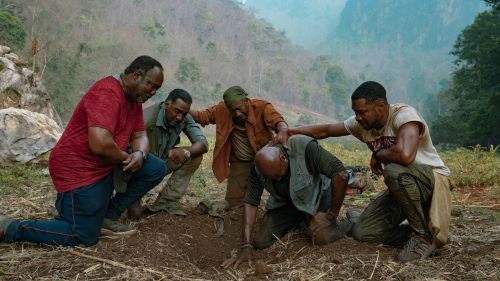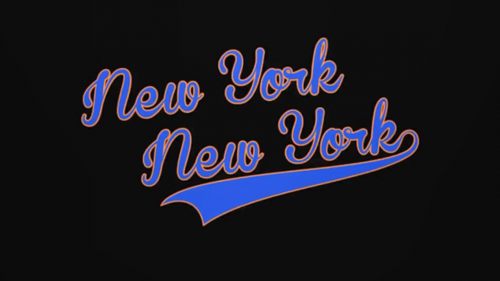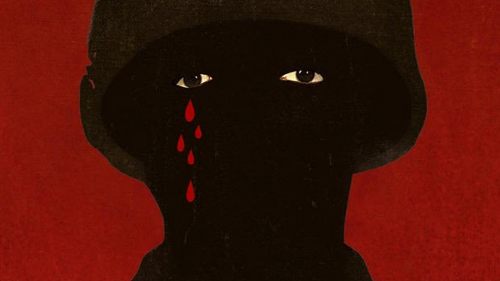Spike Lee In The ‘90s: Still Gotta Have It, Might Not Always Like It
Spike Lee’s movies epitomize poet Robert Browning’s adage that “a man’s reach should exceed his grasp.” For almost 35 years, he’s been, indisputably, one of our most important and distinguished filmmakers, and deserves more recognition than he’s received. But at least as often as he’s succeeded in creating indelible, incendiary portraits of lives caught between America’s mixed messages about race, nationalism and personal ambition, he’s aimed too high, added too many ideas, and occasionally outright failed at communicating messages - including a few of the most important ones - in his films.
And yet, the highlights of his career, some excised from projects that otherwise fell short, reach higher peaks and make deeper insights than almost any filmmaker of his generation, or any generation. Kino Lorber recently released a collection of some of his 1990s films on Blu-ray for the very first time, including Mo’ Better Blues, Jungle Fever, Crooklyn, Clockers and Summer of Sam. As awards season grinds to a close with another likely shut-out of contributions from storytellers of color, the time seems right for another appraisal of this sprawling, intimate, profound, transcendent, and sometimes uneven work.
It probably sounds pedestrian to admit that Mo’ Better Blues is the reason I started listening to jazz, but suffice it to say that when you still remember riding a bicycle around your childhood neighborhood mimicking the notes of “Beneath The Underdog,” it left an impression that no threat of uncoolness (which I can guarantee was an uncool act at 15) could erase. The film courted controversy when released for depicting club owners Moe (John Turturro) and Josh Flatbush (Nicholas Turturro) as Jewish stereotypes - a criticism I don’t presume to pass judgment on - but Denzel Washington’s performance as jazz trumpeter Bleek Gilliam still electrifies the imagination as a portrait of uncompromising, even self-destructive artistry.
The thing that stuck with me in intervening decades since the film’s release was oddly how uncommon it was, both then and now, to focus on white-collar black life. Lee does the same again in Jungle Fever with its story of architect Flipper Purify (Wesley Snipes) and his affluent, Harlem-based family, but the fact that both stories treated these details matter-of-factly - after portraying them at all, something films by white storytellers rarely did, and do - was revelatory. This felt especially true in a post-Do The Right Thing era, when studios acquired (and occasionally bankrolled) films about inner-city black life, from New Jack City to Boyz N Tha Hood.
Today Lee’s films feel like a product of their era, especially artistically: his sense of color and camera movement are wild anachronisms at a time when stories are mostly told either straightforwardly or with a flamboyant, deliberately amplified sense of style. Lee created a sense of location and atmosphere with his sweeping crane shots, his stunning cinematography, and of course his signature dolly movements, where characters are drawn inescapably, hypnotically toward their fates. Ernest Dickerson, who eventually made one of the best of those ‘90s post-blaxploitation films, Juice, helped define Lee’s visual palette as his cinematographer, a world of sumptuous reds and blues that reflected the rich interior lives of the characters on screen. He helped showcase the notion that these black characters could be as ordinary, complex and still relatable as any of their white counterparts.
Mo’ Better remains my favorite of his non-“benchmark” movies, and its structure is sort of perfect in terms of watching a character’s rigid, entitled worldview get dismantled before he must re-forge himself anew with a wiser, more measured, more generous perspective. Jungle Fever feels less successful in that regard because Lee’s own efforts to mitigate his opinions about his premise - a black architect embarks on a tenuous romance with his white secretary - are backgrounded in favor of a number of plot points worthy of their own separate story, therefore overpowering the film as a whole. But it’s that template that also makes Lee so fascinating, that he touches upon ideas that are startlingly relevant that I had then never heard articulated, or seen explored, in another filmmaker’s work.
Inspired in part by Marvin Gaye’s 1984 death at the hands of his father, a minister, Lee explores the crack epidemic in Jungle Fever via Flipper’s brother Gator, a role so successfully brought to life by Samuel L. Jackson that the Cannes Film Festival created a Best Supporting Actor award for the very first time in order to recognize him. Unfortunately, this inclusion short-changes screen time for the relationship between Flipper and Angie (a mesmerizing Anabella Sciorra), whom we never see connect in a meaningful enough way to explain why they stay together for as long as we know they do. The result of this is two central characters about whom more is said than they say themselves, be it by Flipper’s estranged wife Drew (a luminous, heartbreaking Lonette McKee), Angie’s father Mike (Frank Vincent) and two brothers (Michael Imperioli and David Dundara), and a Greek chorus of disapproving Italians (Nicholas Turturro, Michael Badalucco) who circle their more open-minded neighbor Paulie (John Turturro) with bad-faith criticisms of interracial relationships.
Before School Daze, I knew nothing about divisions within the black community itself about skin color, but Jungle Fever vividly foregrounds those conversations even more as Drew registers her past treatment as light-skinned in the context of her husband’s infidelity. But juxtaposed against Paulie’s more mature and humanistic interest in Orin (Tyra Ferrell), a black customer at his father’s store, we feel robbed of the complexity Flipper and Angie’s relationship deserves, and frustrated (possibly intentionally) by their own efforts to reduce their mutual interest to racially-coded terms, much less curiosity.
Crooklyn was for me at the time of its release a great disappointment after the exhilarating, profound achievement of Malcolm X - not just a slighter, more intimate story, but a messy and unfocused one. For better or worse, it’s still all of those things, although what doesn’t work comes more sharply into focus now, as does what enables it to endure as worthwhile if inessential. A chronicle of Lee’s childhood experiences co-written by his sister Joie and brother Cinque, its affection and insight about youth is undercut by a lack of narrative structure and an over-reliance on popular 1970s soul music, but it also explores some interesting ideas about racial harmony, artistic integrity, and geographic isolation in a community that is seldom examined in the context of family dynamics.
The film in a lot of ways epitomizes a change Lee made more discernibly after Malcolm X, possibly in terms of enjoying more freedom and more resources (to license two discs full of classic songs, for example), and yet how that latitude didn’t necessarily benefit his films. Occasionally, he finds that perfect pairing between a song and a scene - “Ooh Child” as young Troy Carmichael (Zelda Harris) joins her family for a funeral she doesn’t want to attend. But other times, the songs feel like they numbly paper over a scene and even contradict the tone established as it began; during a raucous fight between Carolyn (Alfre Woodard) and Woody Carmichael (Delroy Lindo) that evolves to include the entire family, for example, Lee drops the Staple Singers’ “I’ll Take You There” over the action - a choice that confuses the tone and intensity of the moment, especially when it ends with Carolyn throwing Woody out.
Lee’s impulse to use overlapping dialogue also fails to find the right rhythms in the film, particularly when there are so many scenes in which all of the Carmichael kids are bickering and fighting with one another - and it seems much less charming than it seems like it’s supposed to. But the filmmaker also makes us feel Troy’s displacement among four brothers with such profundity, and the loss of her mother so profoundly, that the overall impact remains shockingly powerful. Crooklyn is far from one of Lee’s greatest films, but it’s one of the best examples of moviemaking (by anyone) so good that at its best it more than makes up for what else is bad.
Clockers, its follow-up, delivered his first movie that explored inner-city criminality. Working from Richard Price’s book of the same name (adapted by Price himself), Clockers tells the story of a young man nicknamed Strike who struggles to navigate the double-edged opportunities of drug dealing - working for a menacing, manipulative father-figure named Rodney (Delroy Lindo, hypnotic and fearless) - while trying to help his brother Victor (Isaiah Washington) after he gets arrested for murder. Again, Lee’s impulse to use music hamstrings a number of scenes - some songs pop in inexplicably with no relationship at all to the action on screen - but the bigger issue with the film is its uneven focus on the micro-community in which he lives, the various authority figures and family members trying to offer guidance or exert their influence on Strike, and the cops trying to make sense of a murder unbelievably committed by the less conspicuously guilty of these two brothers.
The mystery of whether or not Strike committed murder runs out of steam long before it’s solved, and the answer feels wildly unsatisfying, albeit not in a deliberate way. As authentic as the language is among Strike and his street-level colleagues, the overlapping dialogue and endless misdirection of conversations also tests audiences’ patience. And as Rocco Klein, the cop assigned to solve the murder case, Keitel is magnetic as ever but also seems a bit lost and settling into repetition as a character with questionable values who succumbs to an unexpected moment of morality.
But where New Jack City and many of the other movies exploring similar subjects during that time period relied upon quickly established genre tropes, Clockers is rich with complexity and anger over a community’s complicity in its own enslavement, personified by Keith David’s no-nonsense cop Andre, but also by refusing to validate the perspective or ambitions of this young dealer poisoning his own people. Meanwhile, like Jackson’s with characterization in Jungle Fever, Lindo’s Rodney and his right-hand man Errol, chillingly played by Thomas Jefferson Byrd, create these indelible, frightening figures who leap off the screen while managing to be so much more complicated than simple “villains.”
The dimensionality that Lee gave his characters, both black and white, while tapping into both their individual and cultural influences, went mostly unparalleled by other filmmakers, manifested in perspectives that were fundamentally shaped by an America shaped by racial divides. These were individuals attempting to claim their own piece of success or happiness and recognizing the larger forces, authoritative and institutional, that worked against them in ways sometimes buried deep beneath other characters’ actions, and sometimes right there on the surface. It manifests in their professional insights, personal goals, life experience, appetites, preferences and interests. And that theme has seldom come more sharply into focus - even if its impact only occasionally works - than in Summer of Sam.
Watching the opening scenes of the 1999 film, where Vinny (John Leguizamo) and his wife Dionna (Mira Sorvino) pull up to the front doors of a discotheque as a camera swoops to follow their grand entrance, it’s hard not to think Lee wanted to copy, or maybe even better, Paul Thomas Anderson’s similar shot at the beginning of Boogie Nights. Lee uses several of the same songs as Anderson - and even uses the song “Boogie Nights” by Heatwave for that opening - but his film focuses on the fault lines within a tight-knit Italian community that begin to widen during the real-life summer of 1977, when David Berkowitz and a monster heatwave left residents anxious and unsettled.
The story itself oozes with the quintessential New York atmosphere for which Lee is known - his knowledge of the city, its history and its people, good and bad. And there’s a palpable tension that escalates as the individuals in his ensemble discover themselves against the backdrop of this existential fear - who exactly is the “Son of Sam,” and what clues have they discovered, or ignored, that might lead to his capture? But once again, Lee tries too much to too little overall effect: he attempts to capture both the disco and punk music scenes, the muscle of the local mafia and the scrappy desperation of the police, and as an unsuccessful framing device, the Yankees’ bid for a national championship. After more than a decade as a virtual documentarian of New York subcultures, he seems to have nothing new to say, especially about Italian-American communities, their self-imposed moral boundaries, and of course their prejudices both within and outside.
The ensemble is filled with characters who are complicated but wildly unsympathetic - phonies, disingenuous people in denial of their actions, appetites and culpability. The interjection of Berkowitz and his crime spree, embodied by longtime collaborator Michael Badalucco in the role, extends the runtime of the film without materially adding to thematic elements in the stories of other characters or offering insights into the killer’s mindset. Lee exerts his creative muscle to use songs by The Who and dozens of others for a period-accurate musical backdrop, but even if he’s one of the few filmmakers willing to create a scene that enables him to play an entire song - as he does with “Baba O’Riley,” the cumulative effect is nominal.
There are other strange elements of this film that hint at possible production limitations, or maybe just choices that didn’t pan out. During an explosive confrontation between Vinny and Dionna, for example, a camera angle fixed on the passenger seat captures only the hands of the characters as they bicker, and seemingly only accidentally. And so many of the scenes drag on as this group of lunk-headed vigilantes bully each other into targeting friends, colleagues and family that you start to wonder what’s gained by making these scenes four or five minutes long instead of one or two.
But he still manages to interject some interesting little character details that hint at profundities which don’t quite materialize, like Roger Guenveur Smith’s quiet exasperation (and occasional provocation) while dealing with racist Italian mobsters, and shrewd casting choices like Patty LuPone as Richie’s (Adrien Brody) mother Helen and Bebe Neuwirth as Gloria, the proprietor of the salon where Vinny works. The idea that the main characters are failing, falling, and desperate to arrive at a clarity - or catharsis - that never materializes unfortunately comes up short, maybe as a direct result of the bluntness of the film’s overall structure, bookended by camera-facing monologues by real-life Berkowitz correspondent Jimmy Breslin, who inadvertently cheapens the whole experience observing that the murders were just one story in a city of eight million of them.
Regardless of his half-successes and even his failures, Spike Lee’s masterpieces remain undiminished, and his impact is undeniable as one of the most iconic, important filmmakers of all time. The films released by Kino Lorber offer much to consider in terms of individual achievement, and thematic and stylistic consistency over the course of a career that justifiably lasted 35 years (and counting). And more than anything, they remind us that even the best directors fall short from time to time, and their lesser work nevertheless contains effort and ideas as worthy as their best.



